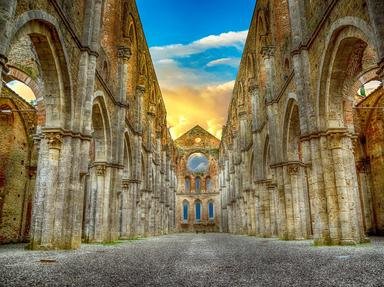Quiz Answer Key and Fun Facts
1. The Great Schism of 1054 was a split between which of these?
2. Eaten only by the very wealthy, a manchet was which type of foodstuff?
3. Which of these mediaeval castles is located overlooking the River Avon in the Midlands of England?
4. Stephen of Cloyes, from France, was one of the leaders of which movement dating from 1212?
5. Which woman was the third wife of John of Gaunt, making her the ancestor of Henry VII and the Tudors?
6. The rerebrace and vambrace were pieces of armour to protect which part of the body?
7. Blondel has passed into myth. As which of these was he famous?
8. Which of these is the best description of a destrier?
9. In heraldry a lozenge refers to which of these shapes?
10. Roger Bacon was an English scholar and philosopher, who is often credited as being the first British scientist. He was also which of these?
Source: Author
rossian
This quiz was reviewed by FunTrivia editor
bloomsby before going online.
Any errors found in FunTrivia content are routinely corrected through our feedback system.


